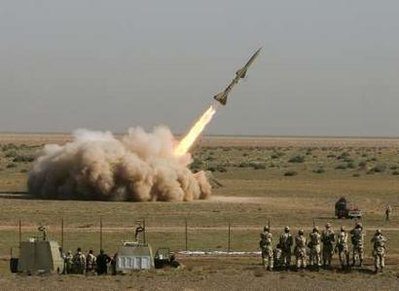Iran unveiled a new surface-to-air missile Tuesday and two radar systems it said would improve its defences against “enemies”.
The military ceremony came just one week after Iran said it downed an Israeli spy drone that had reportedly been deployed above the Natanz uranium enrichment site in central Iran.
The Talash-3 (Effort-3, in Persian) missile is capable of hitting targets at higher altitudes than previously possible, said General Farzad Esmaili, Iran’s aviation defence commander, without stating its range.
But he said the new missile meant that the military “no longer thought about” the S-300 missile system that Russia stopped delivering to Iran because of sanctions linked to the latter’s nuclear program.
Iran and Russia signed a contract worth $800 million in 2007 for the S-300, which is capable of intercepting planes or missiles, but the deal was cancelled by Moscow three years later under a UN resolution.
Iran is demanding compensation for the S-300 contract being axed.
Esmaili sought to play up Iran’s defence capabilities as he revealed the Talash-3.
“The enemies saw what we did with their drones,” he said, alluding to last week’s apparent downing of the Israeli aircraft.
Esmaili also showed off two radar systems — the Arash-2, which can detect small drones at a distance of 150 kilometers (93 miles), he said, and the Kayhan system which can locate missiles and drones.
Iran often uses such ceremonies to project its defence capabilities against the threat of a foreign military strike on its nuclear sites, which are the subject of international concern.
Iran and the P5+1 group of powers (Britain, China, France, Russia, the United States, plus Germany) are in negotiations aimed at ending a decade-long standoff over Tehran’s nuclear activities.
Iran insists its atomic program is solely for peaceful energy purposes and denies it is seeking to develop a nuclear bomb.
An interim deal was agreed last November that saw Iran curtail some parts of its nuclear program in exchange for limited sanctions relief, but a July deadline for a final settlement was missed.
The two sides, however, agreed to extend the talks for four months, with November 24 now the end date for a deal.











